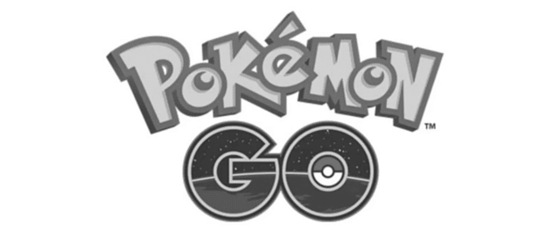


Could Pokémon Go help your paid social media strategy to evolve?




If you want to achieve any marketing aim then biddable is a great way to boost our activity however, biddable is difficult to get right. If you want to get some solid advice on how to do it right, then read our blog on “Biddable media can accelerate any inbound marketing campaign”
Your paid social media strategy probably revolves around Twitter, Facebook and possibly Instagram. Maybe even LinkedIn gets a look in. But what do you do when a brand new mobile app suddenly explodes onto the scene? It’s high time for an update, and Pokémon Go is enjoying all the hype this month. So what will augmented reality bring to marketing?
Pokémon Go enjoys record breaking success
Pokémon Go is still new on the scene, but already its breaking a multitude of records. In the US, the app has been downloaded more times than Tinder! The game’s popularity has been so monumental that it’s actually crashing, as huge numbers of users attempt to log into the server in hopes of catching ‘em all.
However, there are even more impressive statistics out there when it comes to looking at user engagement. According to Survey Monkey, the game’s 21 million daily active US users outranks the previous record held by Candy Crush, who enjoyed a peak of 20 million daily active US users. This makes Pokémon Go the biggest mobile game in US history – no mean feat.
What’s more, data from SimilarWeb shows that Pokémon GO is currently the leading app for daily engagement time in the US. Players are spending an incredible 43 minutes a day on average. This is double the amount of time spent on other engaging platforms, such as Instagram and Snapchat. Furthermore, this is quadruple what Facebook messenger sees.
Marketers are always on the lookout for more engaging and affordable methods of communication. Paid social media services don’t come cheap, but could the success of Pokémon Go be effectively leveraged to support marketing campaigns?
Why is it so popular?
Smart Insights suggests that Pokémon GO could champion augmented reality like the iPod championed music players. This isn’t the first ever use of augmented reality, although arguably it is unique in the way that it brings together the fun of classic arcade gaming, the usability of modern GPS mapping, and the growing trend of health and fitness apps.
Pokémon Go has another huge advantage of course – that incredible nostalgic pull for those who remember Pokémon as a big part of their childhood. This seems to have a big impact – my 21-year-old friend just doesn’t understand what we’re all so excited about, and neither does my mum. However, many people in their mid twenties are losing their minds over it.
It’s true, there have been a few reports of naïve wannabe Pokémon masters getting robbed. I’m not sure these events can really be blamed on the game though. Remember when sat navs first came out? Tabloids were full of scaremongering stories about people driving into lakes because a shiny new gadget told them to. Even the loading screen for Pokémon Go warns users to “stay aware of your surroundings.” It may be exciting to spot a rare Pokémon when you’re out and about, but it’s still a bad idea to chase it into oncoming traffic.
Pokémon and your paid social media strategy
Now, every game designer and his dog is likely to start experimenting with augmented reality. With Pokémon Go seeing incredible success worldwide, there’s been a lot of talk about what could come next. Some ideas are good, some not so good (Mario Kart sat navs anyone?)
Lures (which temporarily attract a greater number of Pokémon to a certain area) are already being set at various businesses in order to increase footfall. But where do we go from here?
One interesting point to note is the possibilities offered by PokéStops (currently located at places of public interest, such as monuments, art installations and historic markers) and Pokémon gyms. The first allows users to collect useful items, the latter enables users to train their Pokémon – and both could potentially be monetised.
Enter a new and truly interactive paid social media strategy. Your brand pays to host a PokéStop at a certain location, attracting visitors (just like a real life lure!) Maybe it even dispenses branded goodies, so players remember you once they’re back on the move.
Interacting with your audience
Unfortunately, we haven't got any exclusive connections with Nintendo to boast about. However, we are having a play with Apple iBeacon technology, which could offer a similar interactive effect. Beacons use small wireless sensors to broadcast radio signals from any chosen location to nearby smartphones. Your phone is then able to receive and decode this data with the help of apps.
Et voila – a brand can potentially market to any smartphone users in the immediate vicinity, sharing special offers or additional promotional information. In time, this may spark a whole new generation of mobile apps that connect to consumers through their smartphones.
If you want to achieve any marketing aim then biddable is a great way to boost our activity however, biddable is difficult to get right. If you want to get some solid advice on how to do it right, then read our blog on “Biddable media can accelerate any inbound marketing campaign”







